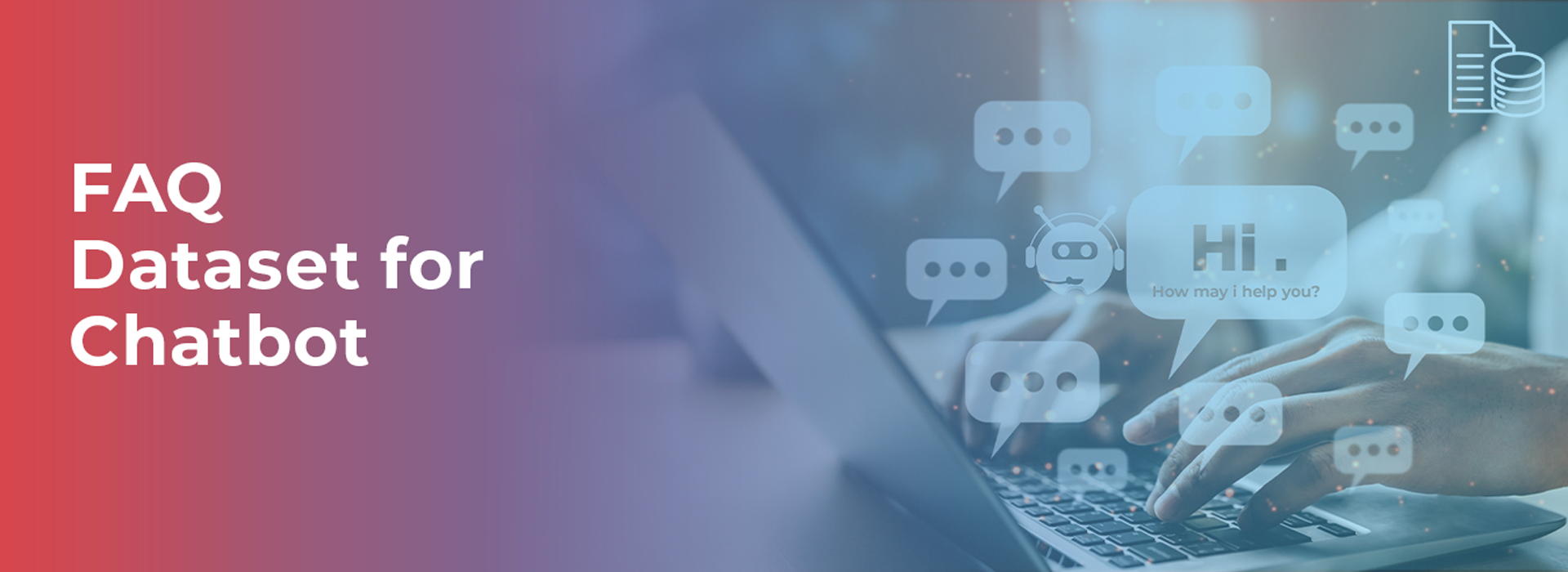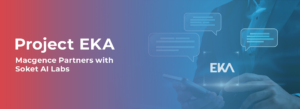Building a High-Impact FAQ Dataset for Chatbot
Chatbots are reshaping how businesses interact with customers, providing 24/7 support, instant responses, and personalized recommendations. However, the backbone of any successful chatbot isn’t flashy AI algorithms or cutting-edge interfaces—it’s the data that powers it. Specifically, creating a robust FAQ dataset for chatbot training is the critical foundation for delivering accurate, reliable, and meaningful responses.
If you’re a tech professional, data scientist, or business leader looking to take your chatbot from basic to brilliant, this guide explores how to carefully curate an FAQ dataset. By the end, you’ll have actionable insights for developing a dataset that not only answers common user queries but also enhances your chatbot’s learning process.
Macgence, a pioneer in delivering high-quality data to train AI/ML models, shares key insights below.
Why is a FAQ Dataset Crucial for Chatbots?
An FAQ dataset is essentially a catalog of common questions and predefined answers tailored to your audience’s needs. It acts as your chatbot’s “base education,” enabling it to understand and respond intelligently to user requests.
Here’s why it matters:
- Accuracy: Well-constructed datasets equip chatbots to deliver accurate responses.
- Consistency: Uniform answers ensure brand alignment in every interaction.
- User Experience: A well-trained chatbot reduces frustration and improves user satisfaction.
Without a well-built FAQ dataset, even the most advanced chatbot struggles to provide valuable service, undermining user trust and engagement.
Essential Components of a High-Quality FAQ Dataset

Not all datasets are created equal. A good FAQ dataset for a chatbot must meet several criteria to ensure performance, as detailed below.
1. Domain-Specific Content
Generic data won’t cut it—your chatbot needs information tailored to your industry. If you run an e-commerce apparel store, your FAQ dataset should focus on order tracking, payment options, and return policies.
To build a domain-specific dataset, you can:
- Analyze common inquiries from customer service emails or support logs.
- Collaborate with subject-matter experts to draft industry-relevant questions and answers.
- Consider Macgence’s tailored datasets specifically designed for verticals like healthcare, retail, and finance.
2. Language Diversity
Language support is vital, especially for businesses operating globally. Incorporate multilingual data into your FAQ dataset to cater to a broader audience. Ensure your chatbot can understand nuances in spelling, grammar, and local dialects.
For example:
- U.S. customers might ask, “What’s the status of my order?”
- British customers might phrase it as, “Where’s my parcel?”
Macgence’s multilingual datasets offer comprehensive coverage in numerous languages, helping businesses deliver localized support.
3. Structured Data
A well-organized dataset improves both training efficiency and chatbot performance. Structure your data into categories like:
- Order Management: “Where is my order?”
- Payments: “Which payment methods do you accept?”
- Returns: “How can I initiate a return?”
Use tagging to relate questions to context. For example, queries about “late delivery” can be linked to the “Shipping” category.
4. Tonal Nuances
Your FAQ dataset should reflect your brand’s tone. Whether your brand voice is friendly, professional, or quirky, ensure that the predefined answers align with that style. This not only improves user experience but also provides consistency across customer interactions.
5. Continuous Updates
Customer concerns evolve over time. Regularly update your FAQ dataset with new questions derived from customer queries, product updates, or service changes. Outdated datasets can result in irrelevant or misleading responses, which could damage your customer relationships.
How to Create a High-Impact FAQ Dataset for Chatbots
Follow these steps to design and implement an effective FAQ dataset for your chatbot:
Step 1. Gather Data Sources
Start by collecting data from multiple channels, such as:
- Customer support logs
- Website/live chat inquiries
- Social media queries
- Help center search trends
These inputs provide a wealth of real-world questions, ensuring relevancy and accuracy.
Step 2. Draft Clear and Concise Answers
Keep your answers short, straightforward, and solution-driven. For example:
- “How do I reset my password?”
- Answer: “Click ‘Forgot Password’ on the login screen and follow the instructions sent via email.”
Avoid overly technical jargon unless the chatbot caters to highly technical users.
Step 3. Organize by Context and Priority
Group related queries and prioritize the most common ones. Ensure your chatbot first addresses the 80% of questions that get asked the most. Use metadata tags to improve searchability.
Step 4. Test Through Simulated Interactions
Run test conversations using mock data to identify any gaps or errors. Tools like AI model trainers can help simulate real-world interactions, pinpointing areas for dataset improvement.
Step 5. Leverage Machine Learning Capacities
Employ AI tools to enhance your FAQ dataset. Sentiment analysis, conversational flow adjustments, and natural language generation (NLG) can all improve chatbot responses over time. Tools like those offered by Macgence help train AI models with precision.
Step 6. Feedback Loop for Continuous Improvement
Monitor real-world performance once your chatbot is live. Track unresolved queries and add them to the dataset. A dynamic, evolving FAQ dataset ensures your chatbot never falls behind user needs.
Final Thoughts
A well-structured FAQ dataset for chatbot training determines whether your chatbot is an asset or a hindrance in your customer experience strategy. With carefully curated data, your bot can provide seamless interactions, improve user satisfaction, and significantly reduce operational costs.
At Macgence, we help businesses like yours create domain-specific, multilingual datasets tailored to your needs. Start building a smarter chatbot today—get in touch to learn how Macgence can support your AI training initiatives.
FAQs
Ans: – Macgence specializes in creating high-quality datasets for AI/ML training. We offer domain-specific, multilingual, and customizable datasets to meet your business needs.
Ans: – AI helps optimize and refine FAQ datasets by analyzing user interactions, identifying gaps, and generating alternate answers for broader coverage.
Ans: – Yes, if your business operates in regions where customers speak different languages. Multilingual datasets allow your chatbot to cater to diverse audiences effectively.
You Might Like
February 28, 2025
Project EKA – Driving the Future of AI in India
Spread the loveArtificial Intelligence (AI) has long been heralded as the driving force behind global technological revolutions. But what happens when AI isn’t tailored to the needs of its diverse users? Project EKA is answering that question in India. This groundbreaking initiative aims to redefine the AI landscape, bridging the gap between India’s cultural, linguistic, […]
March 7, 2025
What is Data Annotation? And How Can It Help Build Better AI?
Spread the loveIntroduction In the world of digitalised artificial intelligence (AI) and machine learning (ML), data is the core base of innovation. However, raw data alone is not sufficient to train accurate AI models. That’s why data annotation comes forward to resolve this. It is a fundamental process that helps machines to understand and interpret […]
March 6, 2025
Vertical AI Agents: Redefining Business Efficiency and Innovation
Spread the loveThe pace of industry activity is being altered by the evolution of AI technology. Its most recent advancement represents yet another level in Vertical AI systems. This is a cross discipline form of AI strategy that aims to improve automation in decision making and task optimization by heuristically solving all encompassing problems within […]
March 5, 2025
Use of Insurance Data Annotation Services for AI/ML Models
Spread the loveThe integration of artificial intelligence (AI) and machine learning (ML) is rapidly transforming the insurance industry. In order to build reliable AI/ML models, however, thorough data annotation is necessary. Insurance data annotation is a key step in enabling automated systems to read complex insurance documents, identify fraud, and optimize claim processing. If you […]


 Previous Blog
Previous Blog







